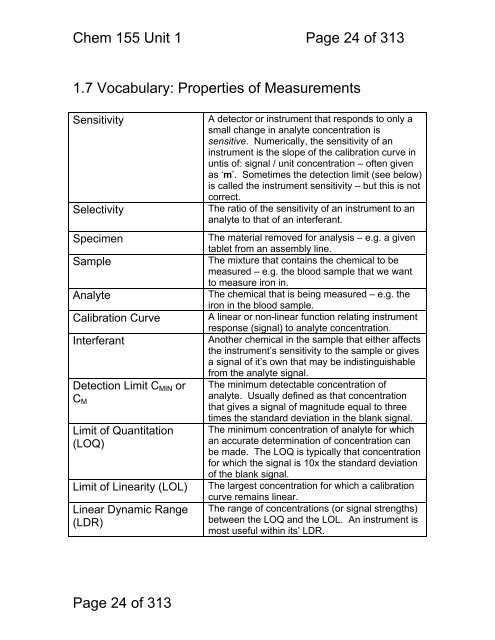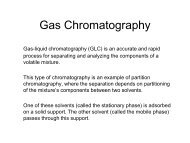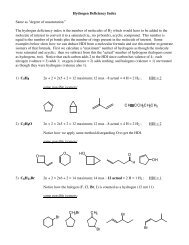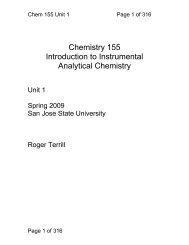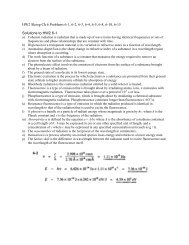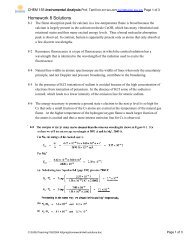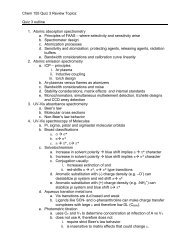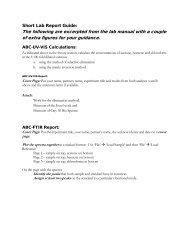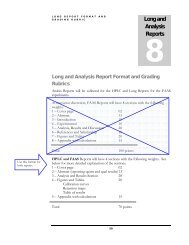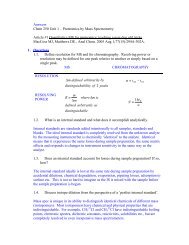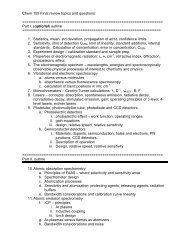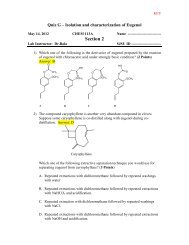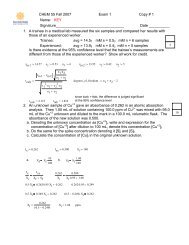Chemistry 155 Introduction to Instrumental Analytical Chemistry
Chemistry 155 Introduction to Instrumental Analytical Chemistry
Chemistry 155 Introduction to Instrumental Analytical Chemistry
You also want an ePaper? Increase the reach of your titles
YUMPU automatically turns print PDFs into web optimized ePapers that Google loves.
Chem <strong>155</strong> Unit 1 Page 24 of 3131.7 Vocabulary: Properties of MeasurementsSensitivitySelectivitySpecimenSampleAnalyteCalibration CurveInterferantDetection Limit C MIN orC MLimit of Quantitation(LOQ)Limit of Linearity (LOL)Linear Dynamic Range(LDR)A detec<strong>to</strong>r or instrument that responds <strong>to</strong> only asmall change in analyte concentration issensitive. Numerically, the sensitivity of aninstrument is the slope of the calibration curve inuntis of: signal / unit concentration – often givenas ‘m’. Sometimes the detection limit (see below)is called the instrument sensitivity – but this is notcorrect.The ratio of the sensitivity of an instrument <strong>to</strong> ananalyte <strong>to</strong> that of an interferant.The material removed for analysis – e.g. a giventablet from an assembly line.The mixture that contains the chemical <strong>to</strong> bemeasured – e.g. the blood sample that we want<strong>to</strong> measure iron in.The chemical that is being measured – e.g. theiron in the blood sample.A linear or non-linear function relating instrumentresponse (signal) <strong>to</strong> analyte concentration.Another chemical in the sample that either affectsthe instrument’s sensitivity <strong>to</strong> the sample or givesa signal of it’s own that may be indistinguishablefrom the analyte signal.The minimum detectable concentration ofanalyte. Usually defined as that concentrationthat gives a signal of magnitude equal <strong>to</strong> threetimes the standard deviation in the blank signal.The minimum concentration of analyte for whichan accurate determination of concentration canbe made. The LOQ is typically that concentrationfor which the signal is 10x the standard deviationof the blank signal.The largest concentration for which a calibrationcurve remains linear.The range of concentrations (or signal strengths)between the LOQ and the LOL. An instrument ismost useful within its’ LDR.Page 24 of 313


